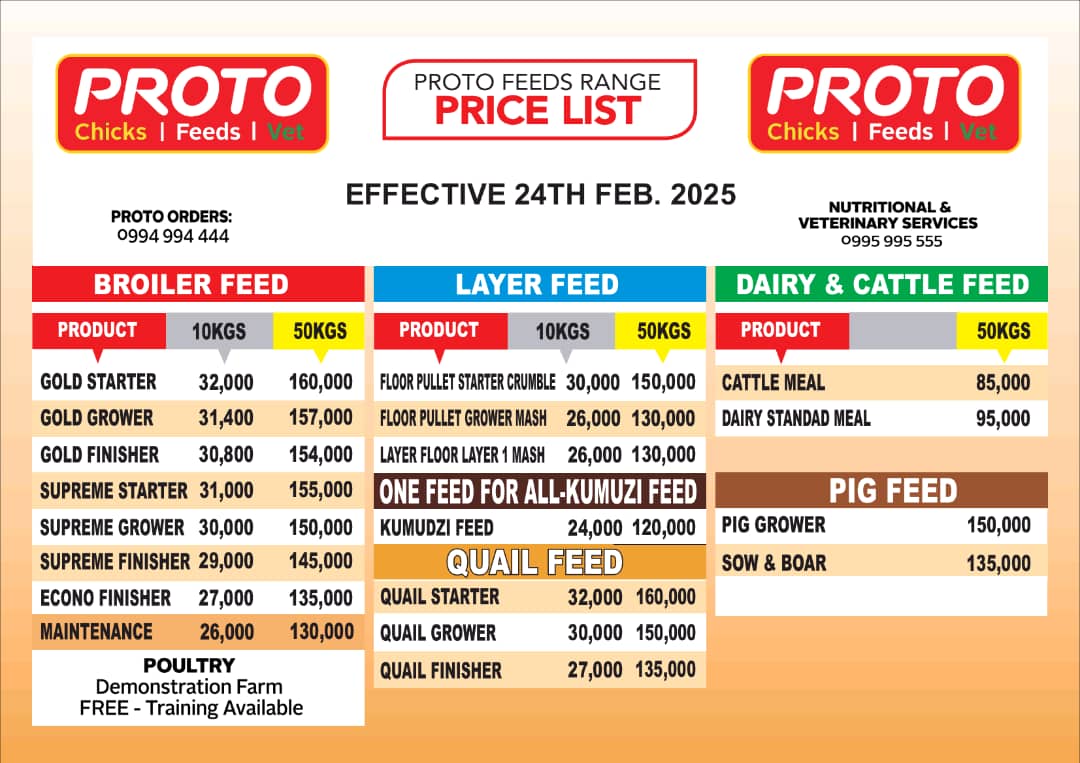By Burnett Munthali
In recent months, Malawi’s poultry farmers have faced a significant challenge as the cost of chicken feed has nearly doubled, rising from K75,000 to K160,000.
This alarming increase of almost 100% is impacting the entire poultry industry, forcing farmers to reassess their pricing structures and operational viability.
The price of chicken feed is a critical factor for poultry farmers, as it accounts for a substantial portion of their overall production costs.
With feed expenses typically representing up to 70% of total costs, the recent hike has raised concerns about the sustainability of poultry farming in the country.
Farmers are now compelled to set prices for hybrid chickens in the range of K20,000 to K25,000, reflecting the increased input costs associated with feeding their flocks.
This significant adjustment in chicken pricing is a direct response to the soaring costs of feed.
Poultry farmers, many of whom operate on thin profit margins, are grappling with the challenge of maintaining profitability while ensuring that their prices remain competitive in a market where consumers are also feeling the pinch.
The increase in feed costs not only affects the farmers’ bottom line but also poses a threat to food security for the Malawian population, which relies on poultry as an affordable source of protein.
Several factors have contributed to the spike in chicken feed prices.
One of the primary drivers is the disruption of global supply chains, a lingering effect of the COVID-19 pandemic.
The pandemic has led to increased prices for raw materials used in feed production, making it difficult for local manufacturers to keep costs down.
Additionally, adverse weather conditions, including droughts and floods, have negatively impacted agricultural production, reducing the availability of key feed ingredients.
Moreover, the economic landscape in Malawi, characterized by high inflation rates and currency fluctuations, exacerbates the situation.
Tariffs on imports and limited access to foreign exchange further complicate the feed supply chain, resulting in higher prices that are ultimately passed down to farmers.
As the costs continue to rise, the pressure on poultry farmers intensifies, forcing them to make difficult decisions about their operations.
The implications of these rising feed prices extend beyond the individual farmer.
Consumers are likely to experience increased prices for poultry products, leading to a higher cost of living and reduced access to affordable nutrition.
In a country where many families already struggle to make ends meet, this situation could have dire consequences for food security and overall public health.
In light of these challenges, it is crucial for poultry farmers and industry stakeholders to explore potential solutions.
Diversifying feed sources and seeking local alternatives may provide some relief from high commercial feed prices. Investing in research and development can also lead to innovative feeding strategies that help reduce reliance on expensive feed, ultimately lowering production costs.
Furthermore, there is an urgent need for government intervention and support programs aimed at assisting poultry farmers.
This could include subsidies for feed costs, access to low-interest loans, and training programs that equip farmers with best practices in poultry management to enhance productivity and profitability.
In conclusion, the nearly 100% increase in the price of chicken feed from K75,000 to K160,000 has created a challenging environment for poultry farmers in Malawi. With hybrid chicken prices now set between K20,000 and K25,000, the sustainability of the poultry industry is at stake.
Addressing the root causes of rising feed prices and providing support to farmers is essential for maintaining a robust poultry sector that can contribute to food security and economic stability in Malawi.
As stakeholders navigate this complex landscape, collaboration and innovation will be key to ensuring the future resilience of the industry.




